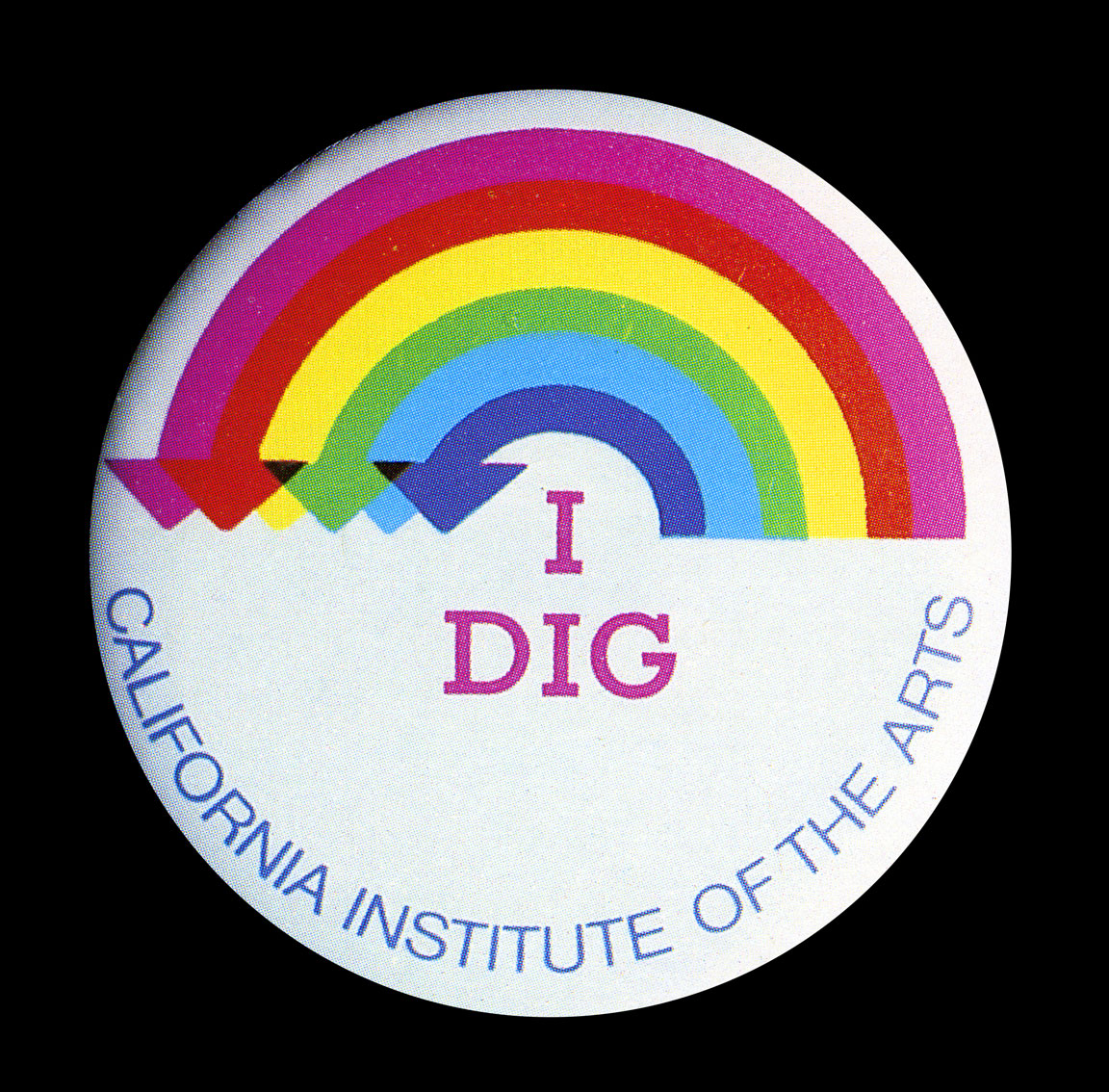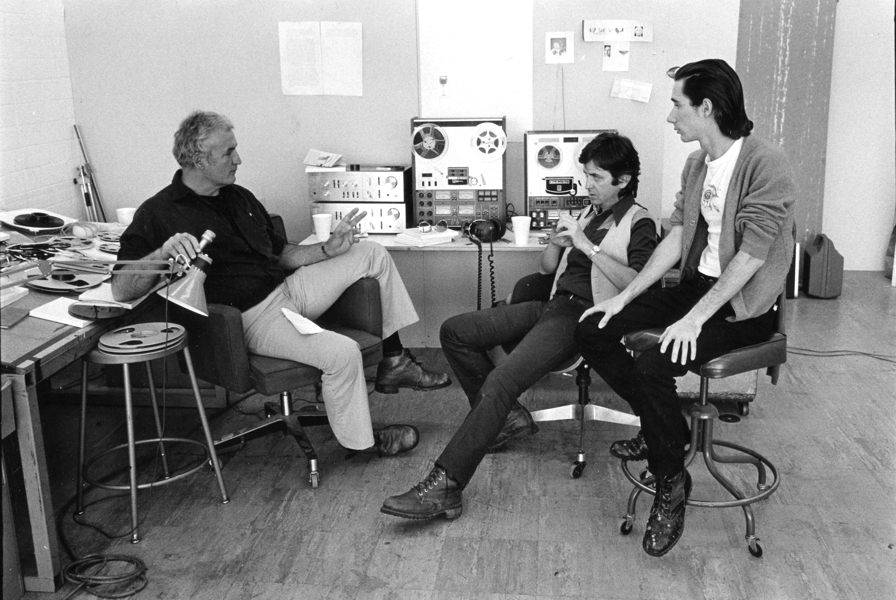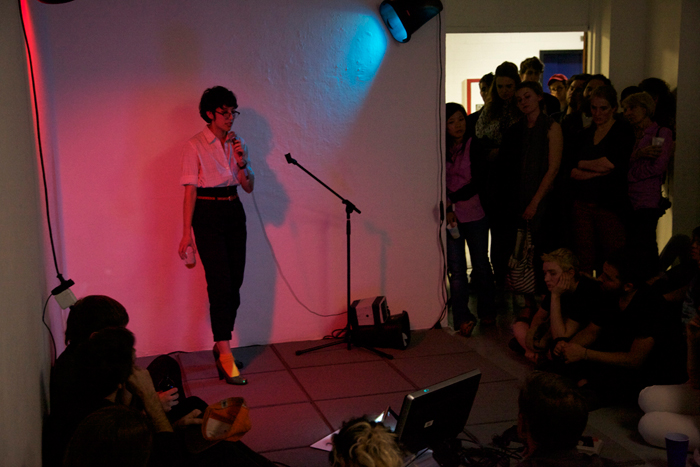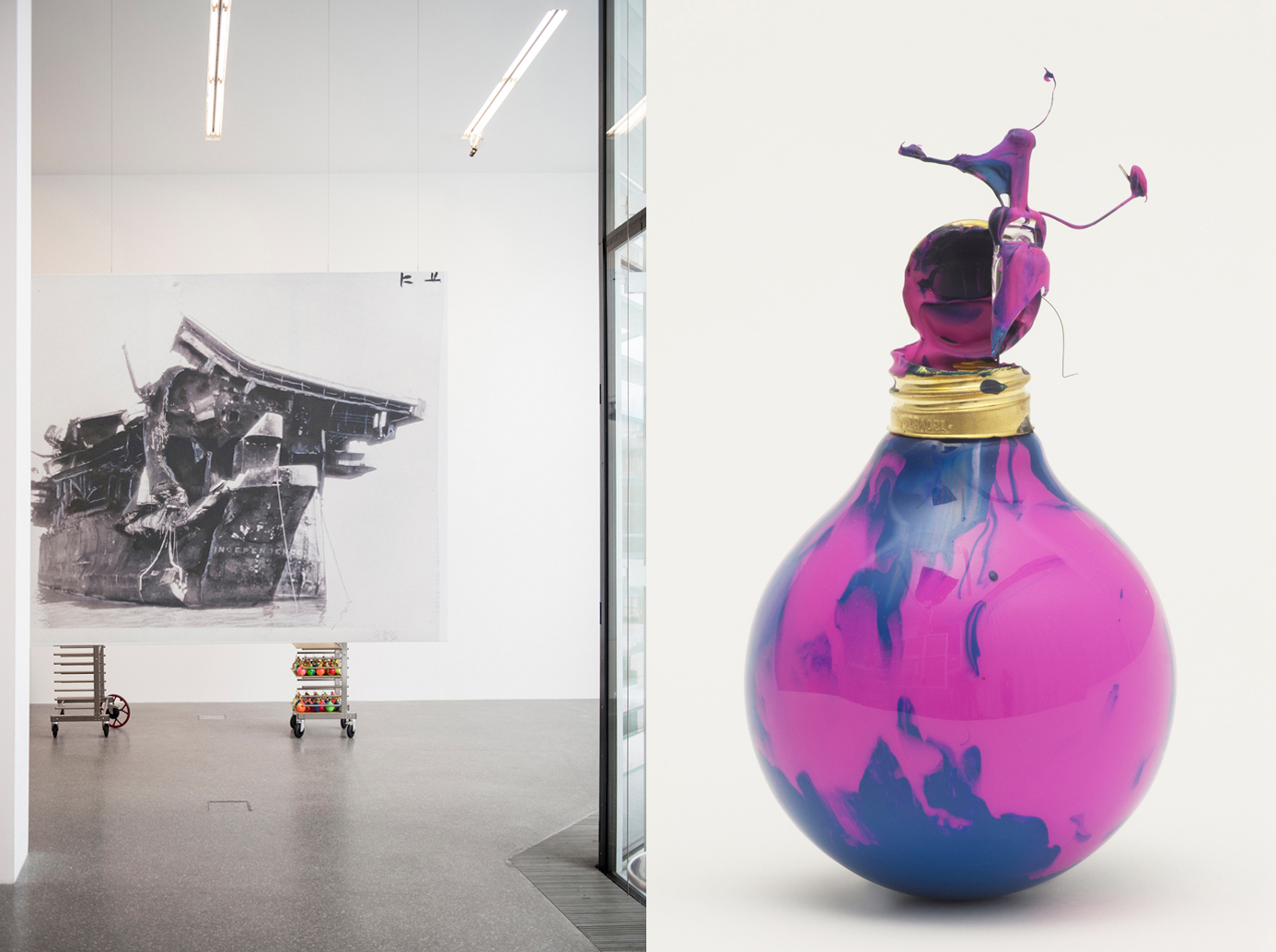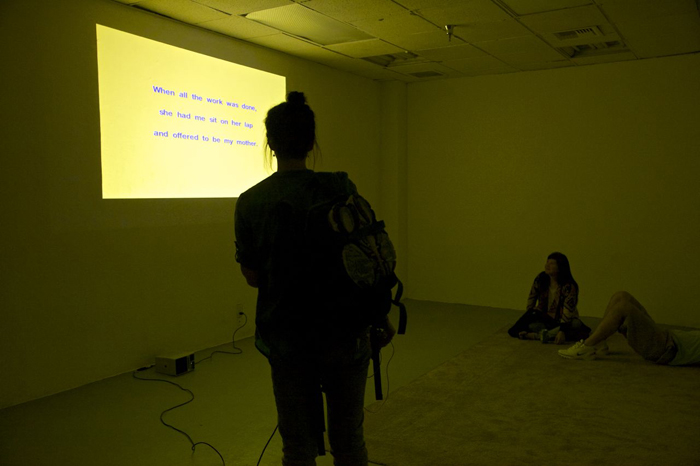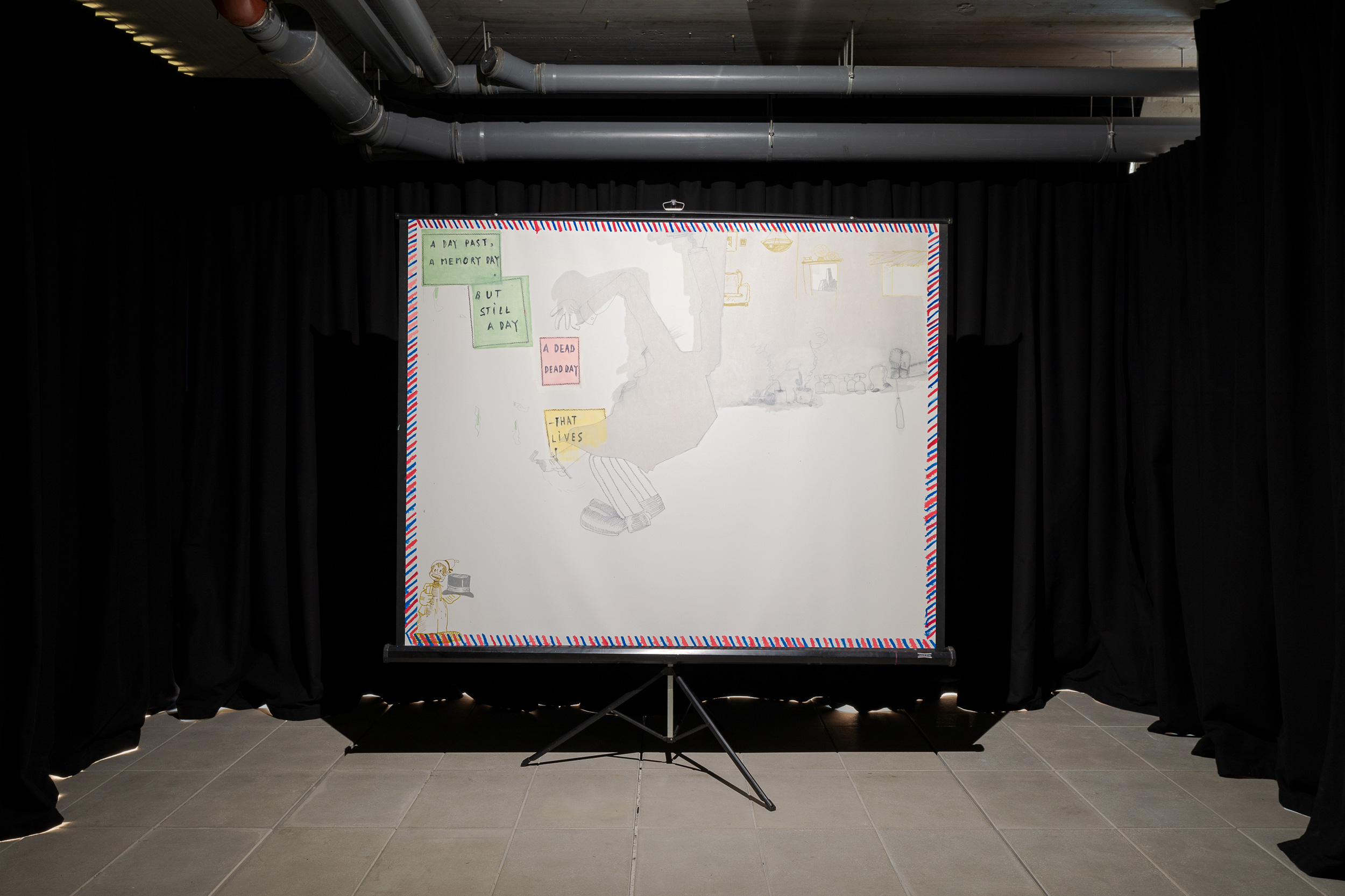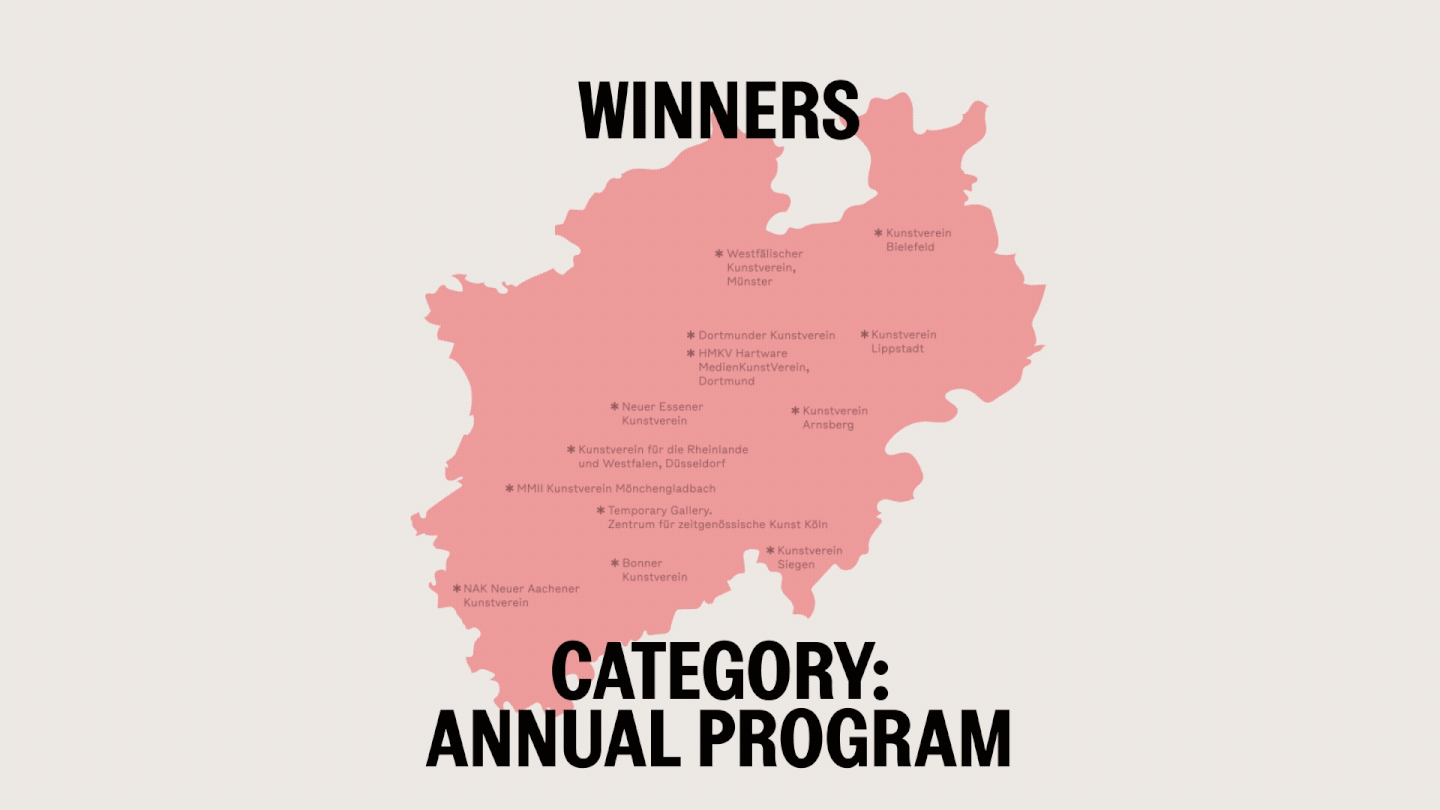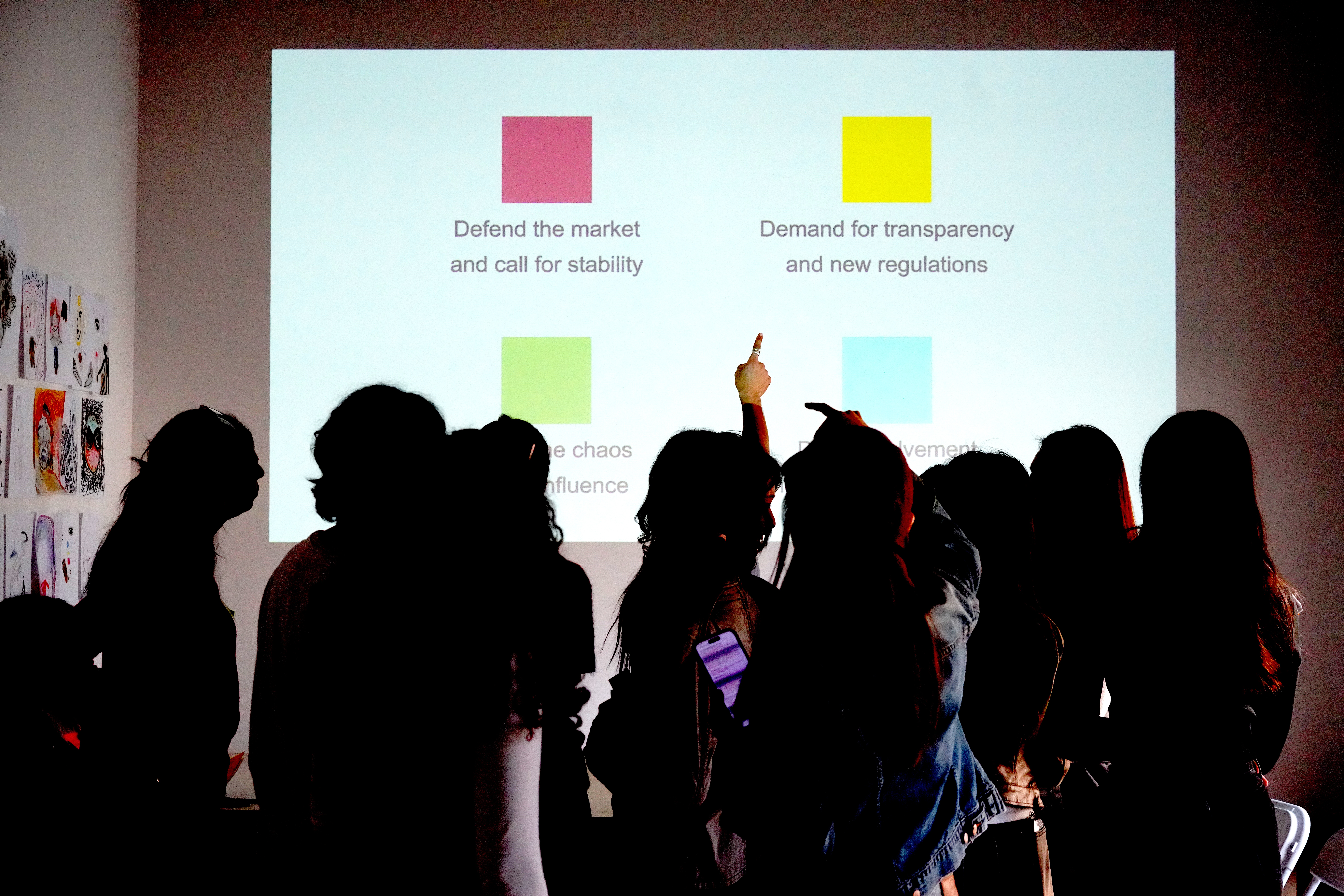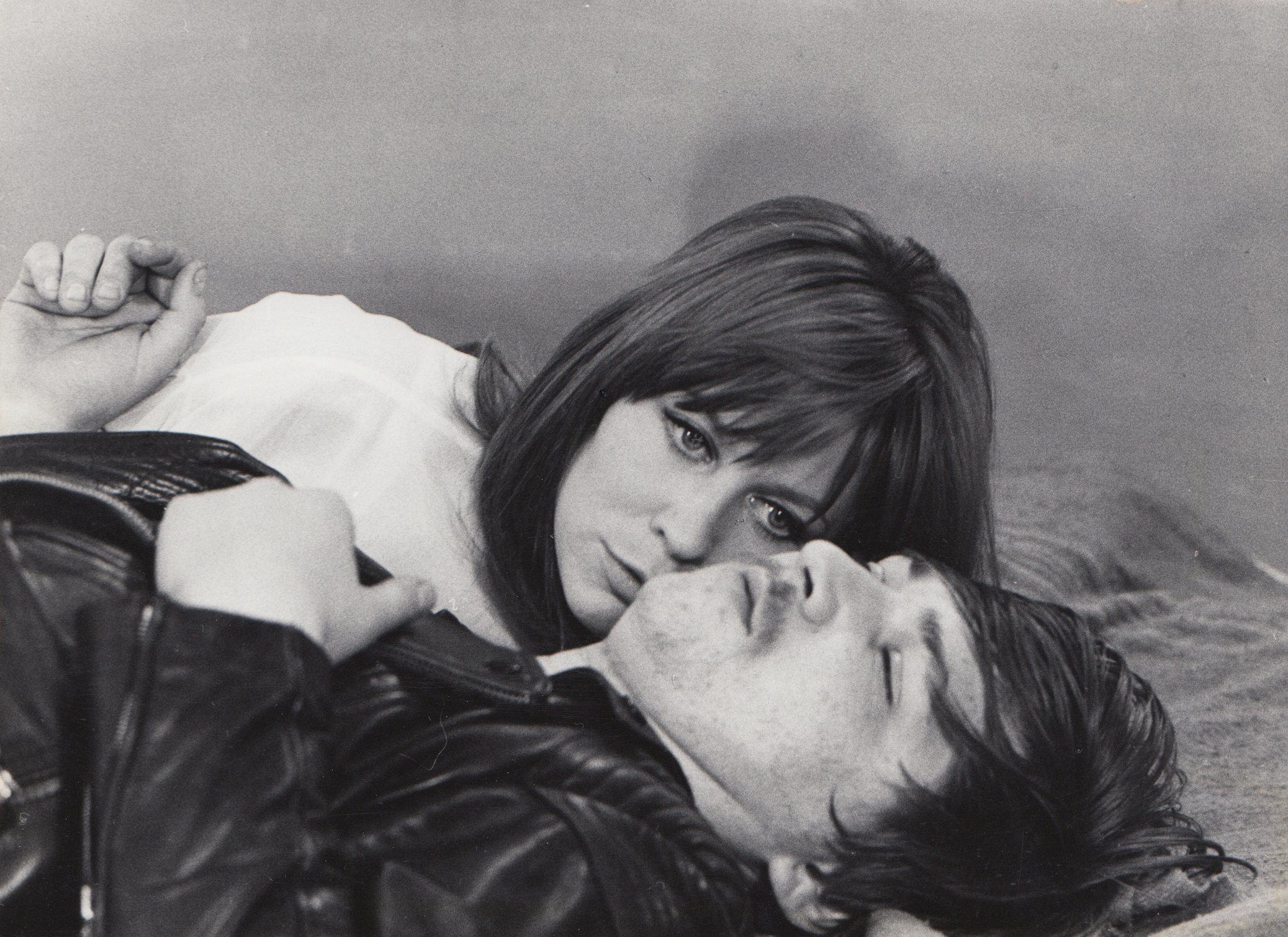My car peeled off the freeway on one of the last exits before the 5 climbs into the treacherous Grapevine and through the dull fields and cow factories of the Central Valley en route to Sacramento. Surface roads as fast and wide as highways ribbon out from the freeway and bank in housing tracts walled with cinderblock and striped by green lawns. Squinting past the stucco McMansions and strip malls, I can almost see the Old West movie sets with cowboys hoofing through the scrub beneath those chocolate mountains; this is the northern hinterland of Los Angeles County. There, the California Institute of the Arts (nicknamed CalArts) perches on a hill, weird as ever, above the recent suburbs metastasizing through the Santa Clarita Valley.
Walt Disney dreamed up this gesamtkunstwerk of a school; the Mouseketeer’s American Bauhaus was built on land not far from his movie ranch. CalArts has since gained a reputation as being conceptually rigorous and morally decadent. A sunstroked year-round summer camp backboned with art world savviness, it is a model that went on to be mimicked by all its successor institutions around Los Angeles. CalArts students met early success in a crew of artists that came to be known as the CalArts Mafia in New York (documented in Richard Hertz’s Jack Goldstein and the CalArts Mafia, 2004). One of the legends of contemporary art in LA is that the most ambitious artists all left for New York until Mike Kelley stayed after graduating with an MFA in 1978.
Among all the dancers, artists, writers, filmmakers, actors, composers, choreographers, theater-makers and musicians the school still produces some of the most successful animators in the world, many of whom even now go to work for Uncle Walt. Each of the various schools (art, dance, music, theater, film/video, critical studies) has developed its own idiosyncratic personality over the years, but all of them endeavor toward some version of an avant-garde or the more advertorial: “cutting-edge.” The Institute’s slow drift away from its vanguard origins into a more corporate institution troubles the long-term faculty and many of the students, a state of affairs resulting from new accreditation rules, low revenue outside of tuition, a couple business-minded past presidents, and the attendant bureaucracies behind all the above.
When the school opened its doors in 1970, classes were offered in “Witchcraft” and “Jointrolling” with nary grades or curricula. A sociologist on staff held an “unscheduled class” that took place whenever he happened to run into a student on campus. Now, curricula is required and though couched in terms ranging from High Pass to No Pass, the grades fool no one with their easy correspondence to the old A through F. The most conservatizing force of all however is the sticker price: $41,700 for enrollment in 2014–2015, not including room, board, or materials—enough to make a life in the arts more like mortgaging a house than la vie bohème.
Founding faculty member John Baldessari spoke with critic Christopher Knight in 1992 for the Archives of American Art about his first experiences with the school: “I think every crazy in the world descended the first year.” Recalling some of the early debates, he continued:
“Well, the whole idea was to raise the question what do you do in an art school? And you say, ‘Well, what courses are necessary to teach?’ and that question is begging in a way, because you can say, ‘Well, can art be taught at all?’ And, you know, I prefer to say, ‘No, it can’t. It can’t be taught.’ You can set up a situation where art might happen, but I think that’s the closest you get.”
The CalArts School of Art owes a lot of its personality to early teachers like Baldessari as well as Allan Kaprow, Michael Asher, Miriam Schapiro, and Judy Chicago. Though there only briefly, Kaprow was the first of many Fluxus cohorts recruited by the first dean of art, Paul Brach, and the permissive playfulness of that movement still haunts the hallways as does Baldessari’s dry humor and art world hustle, Asher’s hardheaded rigor, and Schapiro and Chicago’s political awareness.
In 1980, Catherine Lord became dean of the School of Art and contentiously skewed the program into a more progressively political atmosphere that emphasized critical theory. Jeremy Gilbert-Rolfe was pushed out in 1986 (later becoming the graduate chair at Art Center in Pasadena), leading to Baldessari splitting mid-year with a Guggenheim in hand, though he also eventually returned to teaching at UCLA.
With the departure of Catherine Lord in 1990, the school hired painter and writer Tom Lawson to take over as dean, a position he still holds. “Philosophically, Catherine had limited interest in actual, physical art-making. She was really very conceptual, interested in anti-institutional and anti-material critique and promoted that,” said Lawson when I recently interviewed him. “When I arrived the production facilities were in really bad shape. I spent quite a bit of time in my first years rebuilding the physical structures.”
The political bent of the program introduced early on and enforced by Lord softened without disappearing under Lawson. New faculty is chosen collectively by old faculty, emphasizing the nonhierarchical nature of the school, invariably coming with all the messiness of consensus and committee decision-making but also some continuity. (Likewise, the visiting artists lecture series is collectively run by the students.)
When I asked Lawson what made CalArts different, he mentioned the day of interviews the faculty conducts with MFA candidates in mid-March: “The bottom-line question is: Why should I think of coming here instead of some other place that I’ve been accepted? Overall, we really are pretty intellectual as a group. We’re all driven by intellectual ideas of where art comes from, rather than emotional ones, rather than intuitive ones. That’s the caliber of conversation. We want the students to articulate their thinking.”
Debate and discussion, and thus the ability to clearly articulate a position are at the center of what it means to be a student at CalArts. This is seen nowhere better than in the crit, a linchpin of modern art school that consists of one student artist holding up work for the collective critique of their peers. The late Michael Asher’s Post-Studio taught at CalArts, and featured in Sarah Thornton’s Seven Days in the Art World (2008), stands as a monument of the form.
Crits, Studio Visits and Openings
Passing through the front doors of CalArts, there’s a toilet with some photocopied dollar bills hanging on its lip and a sign that reads “Insert Tuition Here.” Nearby, a gutted lady mannequin sits skirted and scarved, her plasticine face spooky and realistic. Across from her, a handful of dancers in leotards and stretch-pants bend and wait on the tile in front of a theater. The main hall opens up to a second story lined with studio doors. On the ground floor, I pass a dozen students practicing yoga. Up the stairs and past all the undergrad workspaces, after a left at the Lime and Mint Galleries and down another hallway, I arrive at one of the less appealing student spaces at CalArts known as A402.
Beneath office panel ceilings and fluorescent lights mercifully turned off, the assembled artists sit on a cool, gray concrete floor. Leaning against pocked and windowless drywall that bears the scars of hundreds of their predecessors, they encircle a lonesome microphone in front of a single-channel projection. A projection on the wall reads: “I have so much to do today, but all I want to do is smoke weed and watch Audrey Hepburn cry.” These vignettes lasting onscreen from 10 seconds to a couple minutes flash across bright, solid color backgrounds, the highlighted words recounting short tales of hot tubs and lost religion, abortion and meth addiction—but funny.The words color along like karaoke, but the room is silent. One by one however, the braver students go up to the microphone. Some read slow and haltingly, some stumble, others enunciate with the unhurried tenderness of reading to a child. Occasionally the comic timing is on, or off, so that everyone giggles in the dark. At least a fifth of the students quietly nibble sandwiches or sip coffee. Some lie on the floor fully splayed. Thirty-three stories loop over about an hour, all generated from an anonymous online call for submissions, edited only lightly for brevity and clarity. After a brief silence, they start grilling the artist, Adriana Baltazar, on meaning. “There’s something about timing that’s really fucked up here, it makes me want to talk like a robot,” says an artist in a vinyl fetish top and Doc Martens, opening the critique of her peer while petting a docile and desert-colored dog. “Sort of deadpan, like mumblecore” she adds. (CalArts is a vigorously dog-friendly campus.)
The presiding professor for “AR251: Reconsiderations: Critique Seminar,” Charles Gaines, sits on the ground against the wall with his students, adding challenging bon mots, gentle prods, genuine encouragement, Socratic questions, and gnomic wisdom. “It’s not performative work without performance, like reading a Bach cantata without playing it. Maybe there’s a space between the gallery and social media, but I’m still not sure how that works.” A long and meandering conversation about social media follows his pronouncement, drifting further and further into itself. Finally, an exasperated young man declares: “Is anyone else confused about why we’re talking about social media?” And then a discussion about the meaning of that. Many variations of the word “critical” are employed. “Rigor” is operative as well. Someone utters “the commodification of subjectivity.” Walter Benjamin is cited.
“Are we all up to date on Benjamin?” asks Gaines. A limp, schoolish ‘yes’ sort of moans out of the artists. The dog’s panting punctuates the conversation in its intermittent silences. The girl in the headscarf next to me disco-naps.
“The critique of commodity capital is a good one,” Gaines throws in. “It may be true that our desires are exploited because we are so consumed by them. It begs the question of how value is exchanged.” Gaines frames his commentary with a post-Marxist, theoretical language that guides the discussion and is repeated by the students to each other with varying degrees of believability.
I move on to my first scheduled studio visit, meeting second year MFA student Meghan Gordon at her bar. Gordon began some times in her own studio (which the neon sign in the narrow studio window advertises). It’s tucked down a cement walkway alongside eucalyptus trees in the Broad Studio Buildings at the edge of campus. One of 34 grad students in the School of Art (with 15 more in Photography and another 5 in Art & Technology), Gordon’s manifold practice is an impressive conglomeration of social organizing. In addition to the bar, she hosts an informal lecture/dinner series called In-n out, co-directs an unofficial residency program at the Institute called locksmith, Inn, and is a member of neverhitsend, described in her bio as “a collective performatively researching communications ideology.”
Sitting down at the bar, Gordon pours me a glass of whiskey and opens her laptop. A cool breeze blows in from the small courtyard through the open door. She plays a video cut into three sections that was installed in a recent show on campus. One panel plays a video feed of her adult brother expertly playing a video game—an activity that makes watching him a pastime for a group of enthusiasts who comment on the game as he plays in another panel. Below that is a video of his sister as she sits at a bar, drinking beers, talking to her brother while inviting random strangers from the bar into the video’s frame. The video game commenters eventually become concerned and urge her brother to turn off the game and really talk to her.
Quickly finishing our drinks, Gordon walks me to my next studio visit with Becca Lieb, who has an exhibition in the main building—and one of the best of the galleries—D301. Hushed in darkness, the capacious space included items whose names reveal their nationality: French Ivory, Irish Spring, along with a supine candle of the Venus of Willendorf (sticker-priced $12.99) and a neon replica of Rush Limbaugh’s signature. Also included is an email of poetry auto-sent to anyone who wrote her while the show was up. Titled “Out-of-Orifice,” it is a haunting poem composed largely of words used by US intelligence searchbots to flag correspondence for closer examination.
After another too brief half-hour, Lieb takes me to the studio of Laura Schawelka. A graduate of the Städelschule before moving to California, Schawelka’s studio is tucked into a bigger, windowless building with hallways smeared with paint and bathrooms with crossed out and reversed gender signs. Greeting me when I come into her studio is a sultry, life-sized Miss March 1960, Sally Sarell. A shapely blonde with pants covered in paint, she stands next to her easel, her smock peeling off to reveal what all the women of Playboy are hired to reveal. She’s just one of a series of ladies that Playboy depicted as an artist in their centerfolds, all of which Schawelka’s collected. She sits me down at a laptop to show me videos, pictures of pictures, and seductive consumer goods framed in the sexiest ways possible. The videos and photographs are spare and sensuous, self-consciously so, imbued with a critical sense that keeps them arms-length away from each product’s allure.
A week after my studio visits, I return for the Thursday night openings. The security guard waves me in and I wander into the crush of idling students, clutching cans of cheap beer and plastic cups in their hands. Though debatable whether it can sincerely teach a human to be an artist, art school can certainly teach a student how to act like one and the weekly openings are a dry-run for the decades of receptions artists will slog through in their lives, the brands of cheap beer and cheaper wine rarely changing. I head upstairs for Leander Schwazer’s opening in the Mint Gallery, who just got back from installing his solo show at Museion in Bolzano, Italy—an exhibition I penned a short text for. The spirit is collegial and Schwazer hands out sharp little jacks of metal used by the police to pop tires, dozens of which are also embedded in the canvases on the wall.
I continue on, stumbling into a handful of performances. Among them: a live-action experimental animation and a couple playing a piano outdoors in the dark. Drifting back through the warren of windowless corridors that intersect the main building, I stop in at some times—the courtyard out front swells with students clambering in and out of the bar, an epic dance party. Competing music from separate shindigs shimmies through open studio doors. Under cold fluorescent white light, two unshaven men vigorously argue, jabbing the air with hand-rolled cigarettes, their voices carrying over the Talking Heads song, “Once in a Lifetime.” In another, bathed in a red glow, a man shakes his head stiffly left and right to an entirely different beat than the woman wildly swinging her hips and punching the air, though both ostensibly moving to the honeyed funk of James Brown. With each night closer to graduation, when this heavily mortgaged utopia graduates its masters, the parties go later and become more frenzied. Their oscillating beats blare entirely unheard from the broad asphalt expanse of McBean Parkway. Outside the campus, in neat suburban houses, dark except for the sodium orange glow of streetlamps, the denizens sleep, resting for work early the next morning.
—Andrew Berardini

